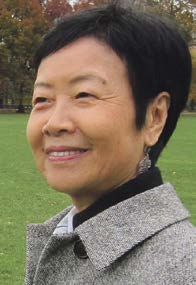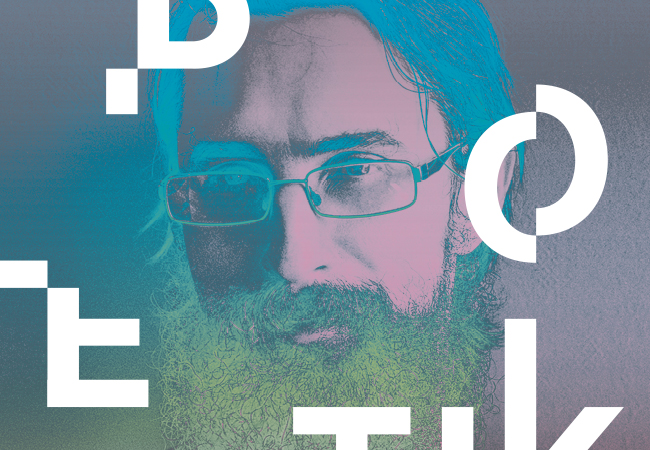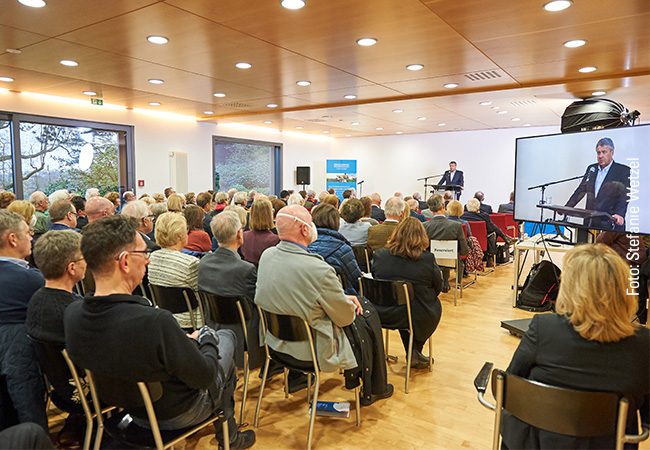The historian Prof. Qin Shao is researching and teaching in the Department 08 with Prof. Iwo Amelung in the summer semester as part of a faculty exchange with the long-standing partner university The College of New Jersey (TCNJ).
UniReport: Prof. Shao, what do you teach at Goethe University?
Qin Shao: I am teaching two courses at Goethe University this semester. One is in sinology about alternative voices in contemporary China, and the other is a history seminar about the problems of the Chinese city. I developed the Sinology course specifically for students at Goethe University who have studied the Chinese language, because at my home university, The College of New Jersey (TCNJ), I only taught history courses with English material.
It was very exciting for me to teach with original Chinese texts at Goethe University, the first such opportunity since I left China in 1987. The Sinology course looks at a range of Chinese texts that reflect alternative voices – unofficial, forgotten, marginalised, controversial, censored and subversive – from the beginning of the post-Mao era in the mid-1970s to the recent Covid 19 crisis. These texts consist of poems, short stories, essays, media reports and petition letters. The history seminar addresses a range of critical issues that have emerged from China’s reform era, with a focus on the disadvantaged: the “floating population” (rural refugees), the displaced urban dwellers, the perpetual petitioners and the “leftover women”.
And what are you researching right now?
My research on the conflictual process of real estate development in China has led me to my current project, Trouble in Departing: the challenge for the Chinese state to manage death. This project focuses on how the tensions that have arisen in the wake of reform have spread from the living to the dead. In some hospital morgues and other institutions in China, certain bodies have been kept for decades because they cannot be processed due to unresolved disputes, and naosang, street protests with the remains of the deceased, have attracted tens of thousands of people. This study will also analyse how the disregard for the dead and the suppression of emotions under Mao contributed to the “inability to mourn” and the changing culture of death in Chinese society. Students in my two courses will learn about some aspects of this research project.
Your academic career can be described as rather unusual, right?
Yes. I belong to China’s “lost generation” that grew up during Mao’s Cultural Revolution (1966-76), which closed schools and changed the course of life. As a teenager, I left my family in Shanghai and spent six years tilling the land in a rural hinterland in central China on behalf of the state. I missed junior and senior high school. Therefore, my career path was different from most Western academics. Before I went to university, I taught myself many things self-taught, including the English language.
In 1974, when higher education was tentatively reopened in China, I was “recommended” by villagers to Anhui Normal University. The university administration assigned me to study history, while I preferred literature as my major. My love for classical Chinese saved me, as ancient Chinese historiography is also a literary work. After graduation, I was sent back to the same rural district to teach at a high school where there was no opportunity to do research.
But China’s transition into the post-Mao era was rapidly changing the lives of millions of people. In 1980, I was admitted to a graduate programme in history at East China Normal University (ECNU) in Shanghai and returned to my native city. After graduating in 1983, I became a lecturer in the History Department at ECNU. My research focused on the Qin and Han dynasties (221 BC – 220 AD) in particular and ancient Chinese statecraft in general. The 1980s were an exciting time in China, with new ideas and initiatives being promoted. But as time went by, my efforts to break new ground were no longer productive. I realised the limitations of the Marxist historiography in which I had been trained. So I left China to pursue new perspectives in the US and completed my PhD programme at Michigan State University in 1994. My dissertation – Culturing Modernity, the Nantong Model, 1890-1930 (Stanford Univ. Press, 2004), examines the transformation of Nantong, a sleepy rural town, into a famous model of modernity that attracted international celebrities such as John Dewey. The sensitivity to the urban landscape I developed while studying in Nantong drew my attention in the early 2000s to the battered city of Shanghai, where large neighbourhoods and city blocks were being demolished for redevelopment. Where did the residents go, how did they go? These two initial questions led me to spend seven summers doing ethnographic fieldwork in Shanghai to investigate how urban housing reform had affected the lives of city residents. This resulted in a series of articles and a book, Shanghai Gone: Domicide and Defiance in a Chinese Megacity (Rowman & Littlefield, 2013).
How do you like Frankfurt and Goethe University?
Since arriving in Frankfurt at the beginning of April, I have enjoyed exploring the Goethe campus and the city. But what has impressed me most are the people on campus. Hosting a visiting professor requires the cooperation of various offices at Goethe University in applying for visas, housing and course arrangements. The Goethe Welcome Center (GWC) took care of all logistical issues. Professor Iwo Amelung from the Department of Sinology supported me from the beginning and provided me with an admission agreement and suggestions for my course programme. Professor Christian Kleinert from the History Department patiently worked out details for my seminar. Professor Zhiyi Yang kept me informed about events on campus. She and other colleagues made me feel part of the academic community at Goethe University.
The Goethe campus offers plenty of food for thought, not only about the past, but also about how we deal with the past. I appreciate that the IG Farben building, with its complicated history, retains its original name, and that Norbert Wollheim Platz and the Wollheim Memorial are close by. Every time I spend time in this area, I can’t help but feel both the historical weight and the lingering light that teaches me respect, reflection and perspective towards the past. The House of Silence is brilliant and moving. The spatial configuration has a magical effect on the human spirit. Everyone who enters the House of Silence is both a unique individual and an integral part of people’s collective search for peace of mind.
Frankfurt has a lot to offer. Housing the urban population has been a constant challenge since the Industrial Revolution. May’s simple, functional and community-enhancing designs are clearly from the past, but perhaps they would not have been if we had lived in a more sensible age where equality and well-being, rather than profit and status, were the main concerns in housing design.
In the remaining three months of my stay at Goethe University, I hope to get to know more colleagues and their scholarship, learn more about my students and, of course, see more of Frankfurt and its surroundings. The world is wonderful, I can’t look away.
Questions: Dirk Frank














